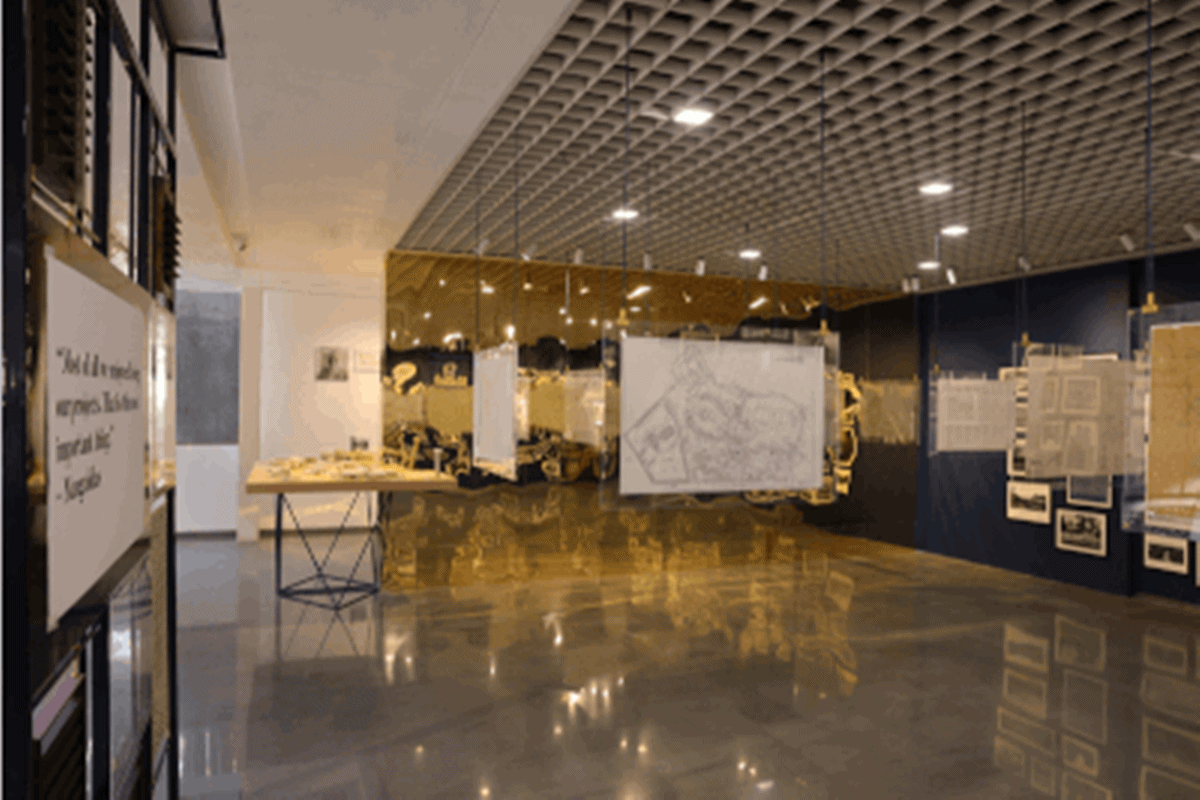The CEPT archives go back in time to the first drawings by city-based architect Kamal Mangaldas and structural engineer Devendra Shah, who built what is now known as the Law Garden from a dumpyard. Their drawings and models are now on display at the exhibition One is to One.
Law Garden is a popular hangout for students during the day, and it gets its name from the nearby Law College. It has a public park with one outer side that transforms into a bazaar for ethnic wares by night and another into a street food hub.
Every evening, the area around Law Garden converts into a bustling shopping district for local clothing, ethnic jewellery, décor items, handicrafts, and local cuisine. The garden was redeveloped in 1988 with the collaboration of architect Mangaldas and structural engineer Shah, who had contributed to the city through numerous public projects during their 45-year association.
They also collaborated closely with Keshav Varma, the then-AMC commissioner, and Surendra Patel from AUDA on the Garden projects.
Through the design of the park, the partners attempted to create an urban space for the city which incorporated the usage of both formal and informal sectors.
The partners came up with a design that requires minimal maintenance around the year.
Law Garden sets a perfect example where the designers made a conscious effort to prioritise the needs of the city before everything else and the result was an inclusive space for all sections of society, says Mangaldas’ nephew Shodhan. “Not only focussing on one section of society like senior citizens or children or morning walkers, Law Garden has taken into account everyone including street hawkers too. Mangaldas believed that the park should provide recreational spaces for people of all ages, from all sections of society. They designed gathering spaces and walking paths for senior citizens, recreational spaces for young adults, stone structures, huts, tunnels for children,” shared Shodhan.
They designed structures for street vendors giving them a proper designated space that was lacking before, Shodhan recalls “He (Mangaldas) said why to ask them to leave but incorporate them as a part of Law Garden. Small things like giving them a metal structure which the vendors can use either tarpaulin or other material as roof, hooks to hang their stuff, holder for light bulb which they can remove when closing to avoid theft. Such minute details were kept in mind. Mangaldas has even suggested changes in the bye-laws of designing parks for better incorporation of vendors,” he said.
Along with Law Garden, over 400 works by Kamal Mangaldas and Devendra Shah are archived at CEPT Archives, that has organised an exhibition called “One is to One,” which opened on Monday.



